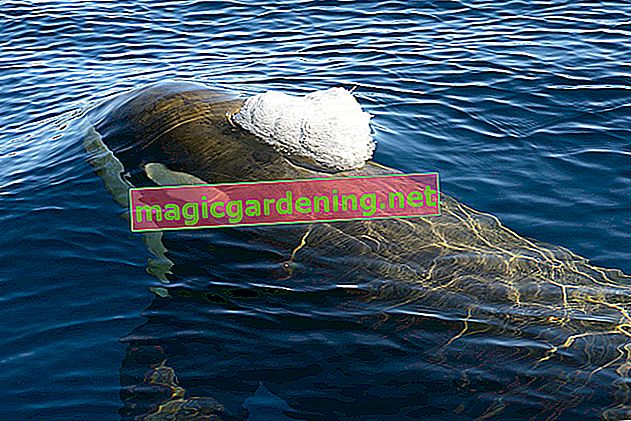
Hibernate fig trees in the open ground
In order for the fig to survive the first winter well, it is important to choose a frost-hardy variety and to give the tree a well-protected location. Always plant fig trees in spring so that the roots can develop sufficiently by autumn. Young figs often freeze back badly and for this reason it is advisable to cultivate the fruit trees in the tub for the first two to three years.
also read
- The right location for the warmth-loving fig
- Plant the fig in the garden
- Watering the fig requires a sure instinct
Ensure good floor insulation
To protect the fig from frost, you can partially fill the planting hole with heat-storing gravel or lava. The air and water permeable materials also prevent unwanted waterlogging and thus prevent rot formation. In the fall, apply an insulating layer of mulch made of wood wool or leaves.
Winter protection of the free-range fig
If the fig has completely lost its leaves in autumn, attach frost protection made of brushwood, straw or reed mats to the trunk. It is helpful to ram stakes into the ground next to the trunk to which you can attach the winter protection. Tie the twigs a little or fix them well on the trellis.
Only remove the winter protection when ground frost is no longer expected in spring. If, despite all efforts, some branches of the fig have frozen back, they are removed during spring pruning.
Hibernate figs in a pot
Potted figs are not as robust as fig trees that grow in the garden all year round. They need good winter protection and should be brought into the home in cool regions.
Winter on the balcony
In mild regions, potted plants can remain outside during the winter months. Place the planters in a sheltered porch corner. Wrap the pot tightly with bubble wrap or put it in a winter protection made of styrofoam. Protect the plant with additional bast or straw mats, which store the radiant heat from the house. Periodically check the moisture of the substrate and water the fig if necessary. Under no circumstances should the substrate dry out completely, as the fruit tree needs some water even in winter.
Winter in the house
Alternatively, you can overwinter the fig fig in the apartment. Winter hardy varieties in the tub can stay on the balcony or terrace until the first frosts. They only move to their winter quarters when the temperatures drop permanently below freezing point. A cool, frost-free room is ideal. Since the fig sheds the leaves, a dark garage is also suitable.
Tips & Tricks
Do not use any fertilizer in the winter months. Water very carefully, as waterlogging in the resting phase promotes rot formation.








